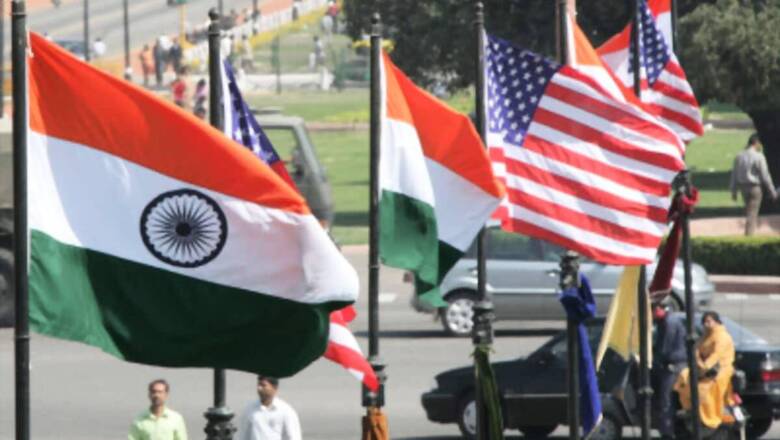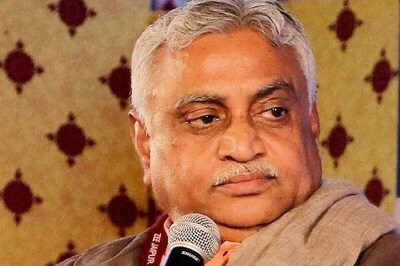
views
India-US relations seem to have returned from the precipice. The question is where to from here. Now that America has stepped up to its responsibility to help India in its hour of need, much of the anger that was building up against America seems to have dissipated. This keeps bringing us back to the central point of any relationship – that they are seldom if at all on autopilot. They need constant care and nurturing. This is where we have to see the India-US relationship in its broadest scope and understand that this is more than just a single-issue relationship.
There are several aspects and levers to this bilateral. First and foremost are the diaspora, who have been critical in building up the multi-layered engagement. In bad times, they have acted to cushion the blow and in good times, they have acted synergistically to propel the relationship further. Given the delay in the US response, we cannot underestimate how the diaspora pressurised the US government to take the situation seriously and reverse its initial position on vaccine exports. Moreover, several diaspora groups have come together to bypass hiccups and red tape to start ferrying aid in a focused way to target communities where they have personal knowledge of or connection with the conditions involved. In short, they are helping both Indian foreign policy and Indians in need during a time of great national crisis.
The second issue that has arisen is the non-issue of freedom of navigation operations (FONOPS) by the US Navy—specifically where a US Navy destroyer passed through an Indian exclusive economic zone (EEZ). A look at the statistics will show that these operations happened regularly, almost every single year. The fact that India never challenged them shows it really had no intention of blocking navigation in economic zones (as opposed to territorial waters)—a point the US understood quite clearly.
The elephant in the room was always China, where India could at a later date impose navigation restrictions on a reciprocal basis depending on Chinese actions in the South China Sea. In fact, one could argue that US FONOPS prior to 2021 were a mutually choreographed ballet, where the US could claim to China “hey look, it’s not just you we’re targeting—we do this to our friends as well”, and India would allow this to happen unfettered to say to China “look the Americans do this to us as well, but we don’t interpret economic zones as territorial waters and we don’t behave badly and petulantly like you do”. Collectively, of course, both India and the US (and presumably China too) understood very clearly and the unnecessary statement put out by the US Navy should at best be seen as an aberration.
There is the pending issue of CAATSA (Countering America’s Adversaries Through Sanctions Act) sanctions on India over the purchase of the Russian S-400 ballistic missile system. The worst-case scenario that people compare this with is US sanctions on Turkey, but remember Turkey and India are not on the same boat. Turkey has a defence system that is highly integrated to the whole of NATO, feeds off the same electronic and human intelligence inputs, and seamlessly integrates with American bases and equipment.
India, on the other hand, has always had disjointed multi-sourced equipment from several different countries. It is not a NATO member, does not make its data links as per NATO standard nor is it integrated into electronic and human intelligence-sharing agreements like Turkey. Clearly then, the parameters of CAATSA that applied to Turkey do not apply to India. Consequently, the road to avoiding CAATSA sanctions is quite simple—realistically, it would involve not co-locating American equipment with Russian, or integrating the sensitive electronic interfaces of Russian and American equipment. This is not an easy task, as it involves some considerable duplication, but the point is that it is not such a tall mountain to climb either in a relationship that is as multi-spectral as the India-US one.
Ultimately, we need to set the temporary blip in anger over the lethargy of America’s COVID response aside. Even as this is being written, the US has swung into action to fast-track export of vaccines, vaccine production equipment, and critical raw materials for vaccine production to India. Again, it is worth noting Ad Nauseam that the India-US relationship is a vast canvas.
The US needs newer and expanding markets that are not bellicose and aggressive like China. India provides that. India needs a partner in human development, in infrastructure development, in increasing the wealth and prosperity of its citizens, and the US market and technology are the easiest and most straightforward path to this.
It will take a significant amount of malignant effort to undo the ties between the two countries—not counting for the fact that Europe’s deep relationship with India and the immense influence it exerts as a force of good in the India-US bilateral. On balance, all is well, but all that is well need attention to keep it well.
Read all the Latest News, Breaking News and Coronavirus News here. Follow us on Facebook, Twitter and Telegram.




















Comments
0 comment